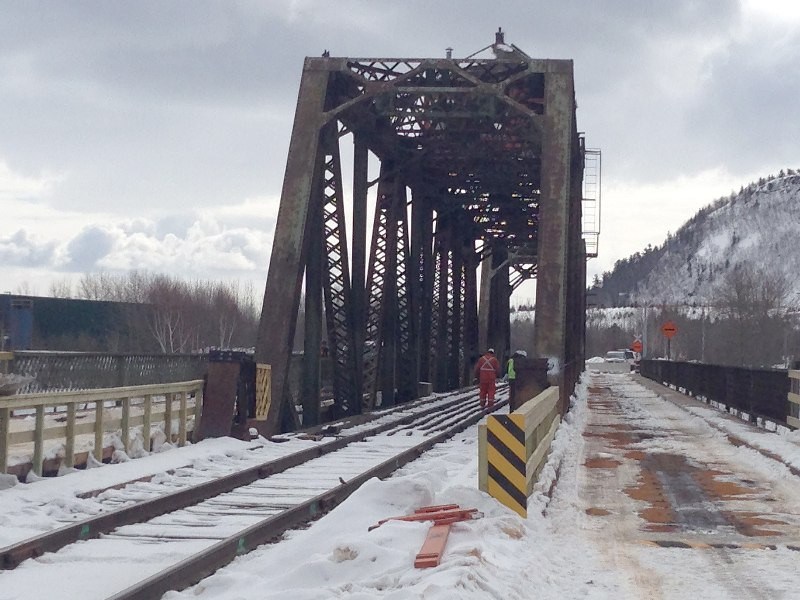THUNDER BAY - The city of Thunder Bay remains steadfast in its interpretation of a 100-year-old agreement that has become the centre of a bitter dispute with the Canadian National Railway over the James Street Swing Bridge.
After more than three years, the issue of the James Street Swing Bridge is now before the courts, with proceedings getting underway at the Thunder Bay Superior Court Wednesday morning.
Christopher Matthews, representing the city of Thunder Bay, presented his argument before Justice George Smith, which included citing the original 1906 agreement between the city of Fort William and the Grand Trunk Railroad that stated the railway company would be responsible for maintenance of the bridge and access to vehicular traffic on the bridge in perpetuity.
The bridge has been closed to vehicular traffic since a fire in October 2013. Access was re-opened to rail traffic three days after the fire. The cause of the fire was listed as officially undetermined.
According to Matthews, CN refuses to make repairs to the bridge because it argues the barriers along the vehicle lanes are not strong enough, which could result in a vehicle going over the side of the bridge in the event of a collision. Matthews argued further that the CN claims it was only made aware of this after the fire.
“The obvious question is why CN doesn’t put up stronger barriers?” Matthews said in court. “...The CN never thought of it as an issue until after the fire ... If CN feels it is not willing to take the liability risk, it should change the barriers.”
Matthews also pointed to CN’s argument that the James Street Swing Bridge is in fact two separate bridges, one for rail traffic and one for vehicular traffic. Matthews called this an excuse CN uses to justify why the bridge has reopened to rail traffic but not vehicles.
However, Matthews cited the original 1906 agreement between Fort William and the Grand Trunk Railway, which he said makes no mention of two separate bridges.
“You can’t divorce one from the other,” he said. “The city expects CN to maintain the whole of the bridge.”
The 111-year-old agreement was the cornerstone of Matthew’s opening remarks. He pointed out how the word perpetuity was mentioned five or six times in the original agreement, which he said means CN has an obligation to allow people to cross the bridge and maintain it.
“Both sides would benefit greatly from this agreement, and continue to do so,” he said.
The CN filed the case in the Ontario Superior Court in February 2015, asking a judge to determine the company’s exact obligations under the original 1906 agreement.
This followed the city rejecting CN’s offer to allow alternate one way traffic on the centre lane over the train tracks, which would also negate the original agreement.
This was not the first time CN tried to get out of the 1906 agreement, according to Matthew, who cited several instances of the company requesting changes to the agreement. This included a request by Grand Trunk to no longer be required to perpetually maintain the bridge shortly after the original agreement was signed, and as recently as a 1984 request asking the city to pay to widen the sidewalk while also dissolving the 1906 agreement.
“The fact that we are here today is another attempt to get out of paying,” Matthew said.
Proceedings continue Thursday, with representatives from the CN expected to present their case.
